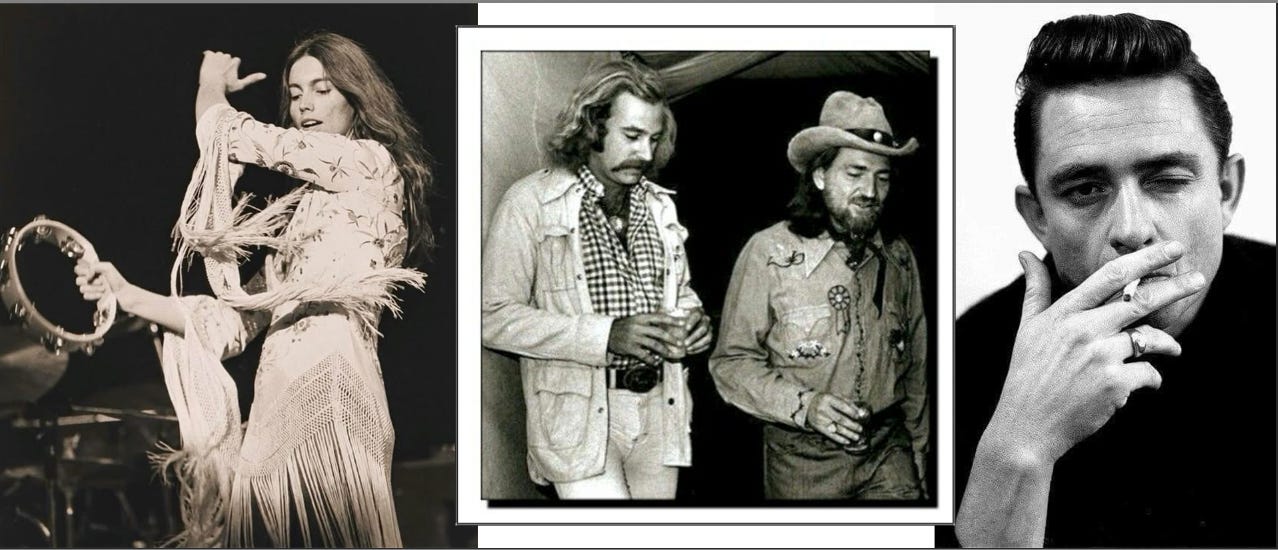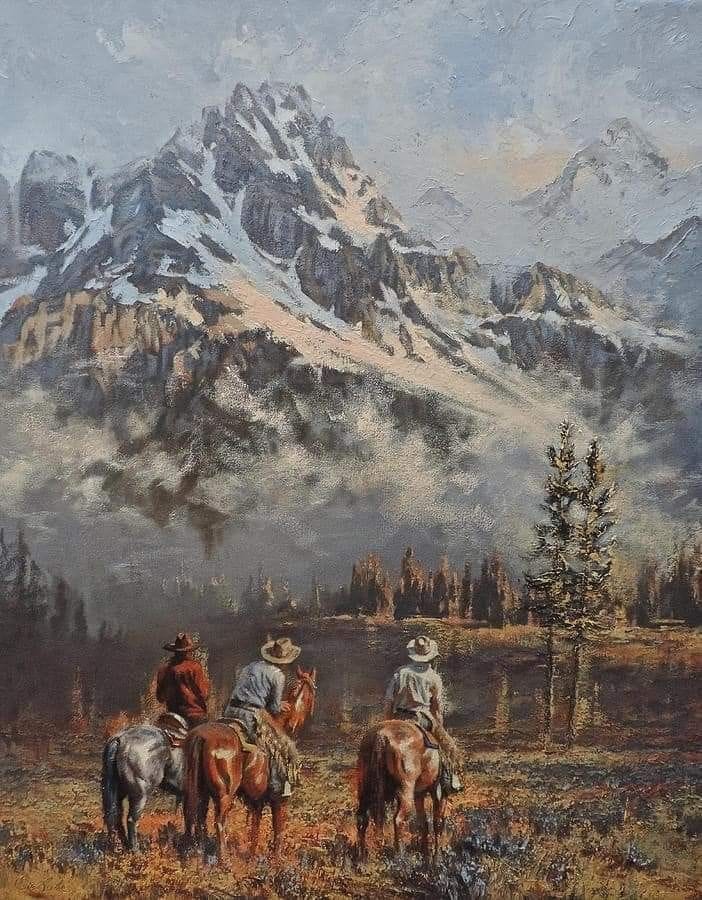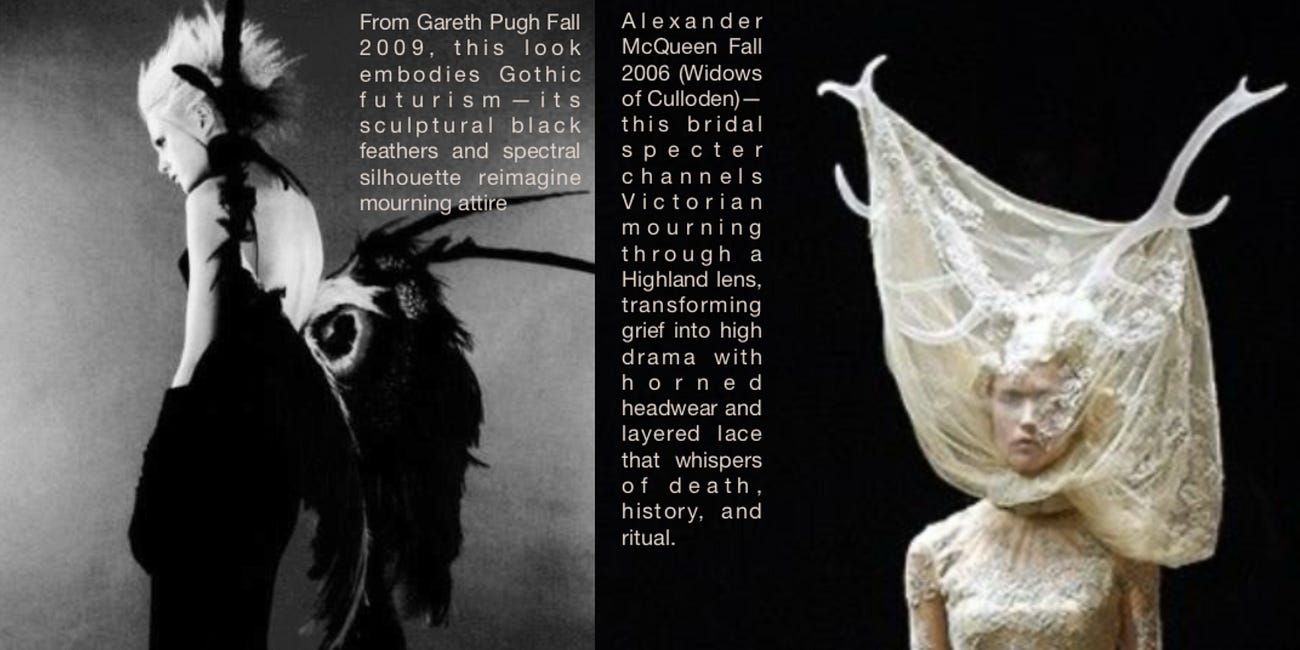"Don’t inquire into a person’s past. Take the measure of a man for what he is today.”
Code of the West
Western: the archetype of grit and independence
The core stylistic elements of Western aesthetic are: rugged individualism, enduring craftsmanship, minimalistic structures, earth-toned palettes, and utilitarian metalwork.
Long before Levi stitched denim or Ralph Lauren reimagined ranchwear, the Western aesthetic was shaped by necessity. Cattle ranchers, cowboys and frontiersmen operated in their own worlds, far beyond the reaches of city luxury and refinement. Their style was cultivated not for self-expression, but through craftsmanship, durability and pride. Wide-brimmed hats shielded riders from the sun, denim guarded against the elements, and leather boots were built to endure miles of rough terrain. Every piece had a purpose.
Their lives demanded grueling physical and emotional endurance, as survival built on hard labor, long distances, and shared survival. However, beneath the calloused hands was great tenderness. Fierce love for ones land and family blossomed into a quiet strength - echoing beliefs long held by Native Americans, whose deep spiritual connection to the terrain produced magnificent stylistic displays of identity that played the foundational role in the Western aesthetic seen to this day. Beadwork, fringe, tooling, and symbolic patterning were not decorative, they were expressions of identity.
As America industrialized in the 50’s and 60’s, Hollywood reimagined the Western aesthetic into a costume of cinematic mythology. The silent film era imbuing audiences with symbols of rebellion and untamed freedom. John Wayne, Clint Eastwood and Roy Rogers skyrocketed the image of the cowboy into a larger-than-life icon, the emergence of Nudie Cohn and his rhinestone cowboy attire merging Western heritage with high theatrical flare.

The Western aesthetic had woven itself into the fabric of everyday American fashion, thought not without resistance. The Beat Generation, intent on distancing themselves from postwar conformity, turned denim into a visual rejection of the status quo. Workwear was seen as an insult to public decorum, even banning jeans from classrooms, cited as being a “threat to classroom decorum.” This is incredibly paradoxical, due to the American Dream being so deeply mythologized as a source of national pride. In a culture obsessed with mobility, the working man was only to be seen from a distance, and in adopting the uniform of the new frontier a new generation found its own sense of freedom.

Ralph Lauren brought Western wear to high fashion in the 1970s, building his Americana empire as a love letter to the rugged romance of the frontier. His collections featured tailored denim, suede fringe jackets, bolo ties, and cowboy boots—elevating the rough n’ tumble aesthetic into something coveted around the world. At the same time, the outlaw country movement emerged in defiance of Nashville's commercial record label companies, who were meddling for corporate control over their creative liberties. Chiefly assembled by the likes of Willie Nelson, Johnny Cash, and Emmylou Harris, these artists kept the true grit alive. They wore leather vests, jeans that were actually worn in, and silver belt buckles to voice their aesthetic protest.


By the 1980s and 1990s, Western influences infiltrated rock music, grunge, and alternative fashion. Thierry Mugler showed structured leather and bold fringe, while Versace sent baroque Western motifs down the runway. Calvin Klein and Helmut Lang reimagined denimwear and leather boots in their minimalist vision, and delivered their looks into the heart of mainstream America.
By the 2000s, the Western aesthetic had gone global. Today, blue jeans are among the most purchased garments in the world, Americans, on average, owning six to seven pairs each.
Western style is more than an aesthetic—it is a legacy. It is for those who understand the balance between toughness and tradition, between work and artistry. Whether through the dust of the rodeo or the glow of a honky-tonk stage, Western fashion remains as untamed as the land that inspired it.
The most iconic living embodiment of the Western aesthetic is Johnny Cash.
Johnny Cash was an American singer-songwriter whose persona came to symbolize the Western archetype. Known as "The Man in Black," Cash chose his stark, utilitarian clothing deliberately, stating that he wore black as a form of protest for the poor, the imprisoned, and the overlooked. His aesthetic reflected both the severity and sincerity he felt through his life. He dressed the way he wrote, honestly. His wardrobe was a stark contrast from country stars of the time, further rooting his identity as the self-defined American man.
The best fictional embodiment of the Western style is The Marlboro Man.
The Marlboro Man was a fictional advertising figure introduced in 1954 to promote Marlboro cigarettes. The goal of this campaign was to take cigarettes, a product mostly consumed by women, and create a masculine air to widen their market. What resulted is one of the most recognizable and impactful marketing campaigns of all time. A solitary man on horseback, riding in jeans, leathers and a wide-brimmed hat was a perfect depiction of the stoic, rugged man of “the wild wild west”. Though completley fictional, The Marlboro Man played a huge part in shaping how the cowboy was perceived in American and global consciousness.
In summary, let’s review the five core competencies of the Western Aesthetic once more:
Rugged Individualism
Western is not styled for approval—it is worn for survival. This archetype emerges from self-reliance, solitude, and internal direction. It is a visual code of autonomy, built on the quiet refusal to follow.
Enduring Craftsmanship
Nothing in Western dress is ornamental for fashion’s sake. Denim, leather, canvas, and wool are not trends—they are tools. Materials are chosen for what they can withstand, not how they photograph. Stitching, hardware, and silhouettes are not aesthetic flourishes—they are evidence of skill, purpose, and permanence.
Minimalistic Structures
The true Western silhouette is stripped of excess. Form follows function, and in doing so, becomes iconic. Sharp lines, clean cuts, and durable fabrics create a style that rejects decoration in favor of durability and quality.
Earth-Toned Palettes
The Western aesthetic is painted with hues of the natural world. Dust, rust, bone, clay, faded indigo, sunbaked brown, each of these tones is worn to blend in with the backdrop of a life lived outdoors. Traditionally made with natural dyes, this palette lovingly endures.
Utilitarian Metalwork
Western metal is not jewelry, it’s function. Belt buckles, snaps, spurs, conchos—each piece is tactile and necessary for everyday life. They are symbols of labor, grit, and code, worn not to sparkle, but to last.
“I ain’t never been nothing but myself.”
Patsy Cline
With great personal aesthetic,
Alexandra Diana, The A List
GLAMOUR IS DEAD! LONG LIVE PUNK!
"The only reason I’m in fashion is to destroy the word ‘conformity.’”














I love how the western style is making it rounds back to this era lol. You also reminded me of how most stylistic choices have a purpose before these became estheticized. I’m enjoying reading the A-List! 🫶🏾